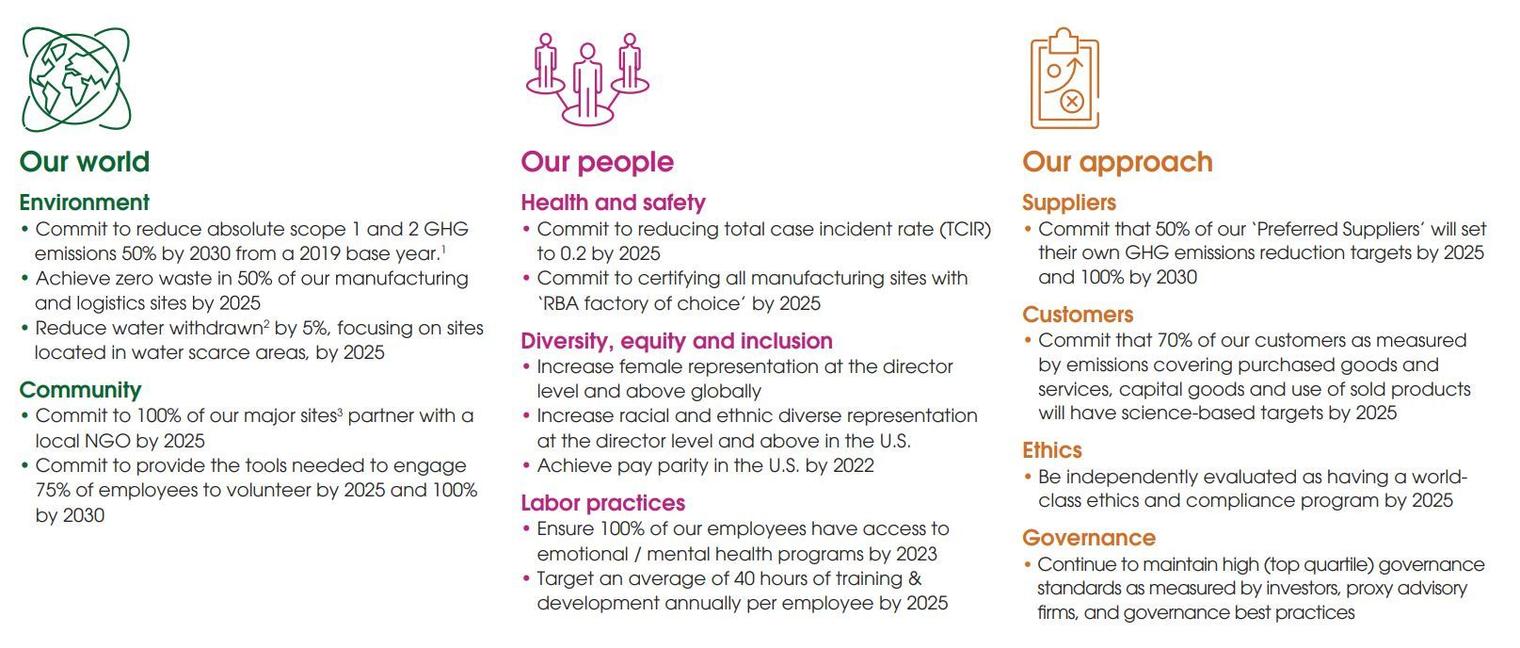Our role in the Flex corporate ESG strategy

Introduction
Our previous blog posts have described the progress made by Flex Power Modules in reducing its environmental impact, specifically on waste and emissions. As well as targeting environmental issues, the scope of the Flex ESG strategy addresses the wider concerns of the company and its stakeholders, including the creation of a safe, inclusive, and respectful working environment, investing in our communities, and driving ethical and environmental, social, and governance practices with transparency.
In this blog post we look at the importance of having a credible, trustworthy approach to sustainability, based on a well-executed ESG strategy, and how Flex Power Modules plays an integral role in the overall Flex ESG Management System.
Why is an ESG Strategy important?
The global pandemic of 2019 re-enforced the growing support for Stakeholder Capitalism, a philosophy which believes that a company’s obligations go beyond shareholder returns, extending to its impact on society and the environment. This philosophy includes the creation of secure jobs, sustainable operating practices, exemplary customer service, cultivation of long-term supply-chain relationships and payment of fair taxes. As support for this philosophy grows, investors increasingly view ESG performance as a key indicator of a company’s future performance and its ability to deal with uncertainty. This is reflected in the financial markets, with a recent report from Morgan Stanley[1] highlighting record demand for sustainable funds which saw a median return of 6.9% in the first half of 2023, compared with 3.8% for traditional funds.
The Flex ESG strategy
Sustainability has been a cornerstone of Flex’s business strategy for over 20 years and our ESG strategy is key to our vision of becoming the most trusted global technology, supply chain, and manufacturing solutions partner to improve the world. The Flex ESG strategy is based on several pillars, figure 1, with well-defined goals in each category.

Figure 1: The Flex ESG Strategy is based on several pillars
Having an ESG strategy is not enough, however – it must align with the vision and culture of the organisation, must be sponsored from the very top level, and must flow down to operational levels without being diluted. Above all, the organization must be obviously committed to it and totally transparent in reporting on progress and setbacks. A recent study from PricewaterhouseCoopers[2] found that 87% of investors surveyed believe that corporate reporting contains unsupported sustainability claims. Furthermore, 75% of survey respondents stated that their confidence in sustainability reporting would be stronger “if it were assured at the same level as companies’ financial statements (i.e., reasonable assurance).”
Executing the Flex ESG strategy
Effective governance is key to embedding sustainability into the DNA of any organization and the governance structure must encompass multiple levels of responsibility, ensuring that everyone knows how to personally advance the company’s ESG goals.
The Flex ESG management system is aligned with industry standards, regulatory compliance, and best practices and is based on the principles of Plan, Do, Check, and Act. The Flex global sustainability program office is instrumental in ensuring that the EMS management system identifies new improvement areas and is taking corrective action.
Within Flex Power Modules, a local “green” on-site sustainability team is responsible for the development and administration of local, site-specific plans. Flex Power Modules’ scorecard performance is reviewed during monthly meetings with the global sustainability program office, where issues can be highlighted, and improvement ideas shared with other regional sustainability leads.
The process is heavily data driven and the green team populates the relevant data for the three Flex Power Modules site into a central database. Monthly data collected includes resource consumption, employee training and community service hours, and other data that tend to fluctuate month to month. Less variable data such as the percentage of electricity purchased from third-party renewable and non-renewable sources and the percentage of water withdrawn by source is updated annually.
The Flex Power Modules green team is also responsible for ensuring local compliance with the fundamental policies of the Flex sustainability strategy. For example, individual employees are targeted to undergo an average of 40 hours of training and development annually by 2025 and volunteering, inclusivity, and DEI in hiring and management decisions are actively encouraged.
As an example of Flex Power Modules’ commitment to strive for excellence in corporate social responsibility, our factory in Shanghai, China has recently been recognized by the Responsible Business Alliance (RBA) and awarded with a “Factory of Choice” award.

Figure 2: Factory of Choice certificate
Effective Execution Requires Engagement at all Levels of the Organization
As a global industry leader, Flex has a responsibility to lead the way in sustainable business operations. The Flex ESG strategy is built upon many years of experience, but its effectiveness depends upon the buy-in and engagement from all levels of the organisation. Flex Power Modules, as a key business unit within the Flex organization, is fully committed to the execution of the corporate strategy and, through its local “green team” contributes to the overall progress while leveraging the knowledge and expertise of the wider organisation.
[1] https://www.morganstanley.com/content/dam/msdotcom/en/assets/pdfs/MS_Institute_for_Sustainable_Investing_Sustainable_Reality_1H_2023_report_FINAL.pdf
[2] https://www.pwc.com/gx/en/issues/esg/global-investor-survey-2022.html
